Fertilizing Houseplants is a vast and somewhat confusing topic for many houseplant enthusiasts. We break down the basics in this simple guide.
We all need to eat in order to grow and sustain ourselves. Plants need to eat too. Although they don’t need to be fed quite as often as we do or our household pets.
Plants eat small amounts of food daily through photosynthesis (the process of absorbing sunlight) and the nutrients they receive in the soil. Over time that nutrient will deplete and if you want large healthy plants, you will need to replenish those nutrients.
In this guide we will go over all the basic tips for fertilizing your plants to keep them happy and healthy all year long.
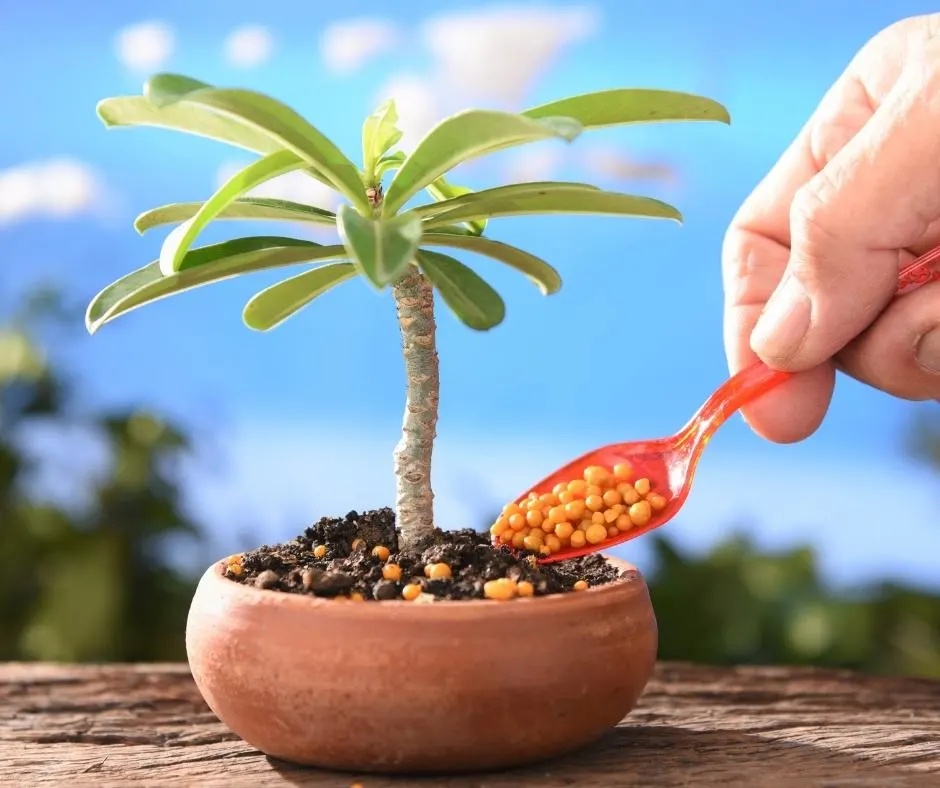
When should I fertilize my houseplants
In general it’s best to avoid fertilizing your houseplants when they are not in an active growth cycle. This is why many people choose to stop fertilizing their houseplants in the winter months. Fertilizing your plants when they are not able to use up the extra nutrients can lead to excess salt concentration.
Most people choose to fertilize in the springtime to fall. If you want to follow that schedule, a good rule of thumb is to fertilize every 3-4 weeks during spring, summer, and early fall. Depending on where you live, reduce fertilizing as the cold months approach.
If you live in a very warm climate where the winters are mild and warm, you may not need to reduce fertilizing your plants. In some areas plants will continue growing and putting out new leaves all winter long. My plants slow way down on growth during the winter. But they will still continue to put leaves out occasionally. I live in the Pacific Northwest in zone 8.
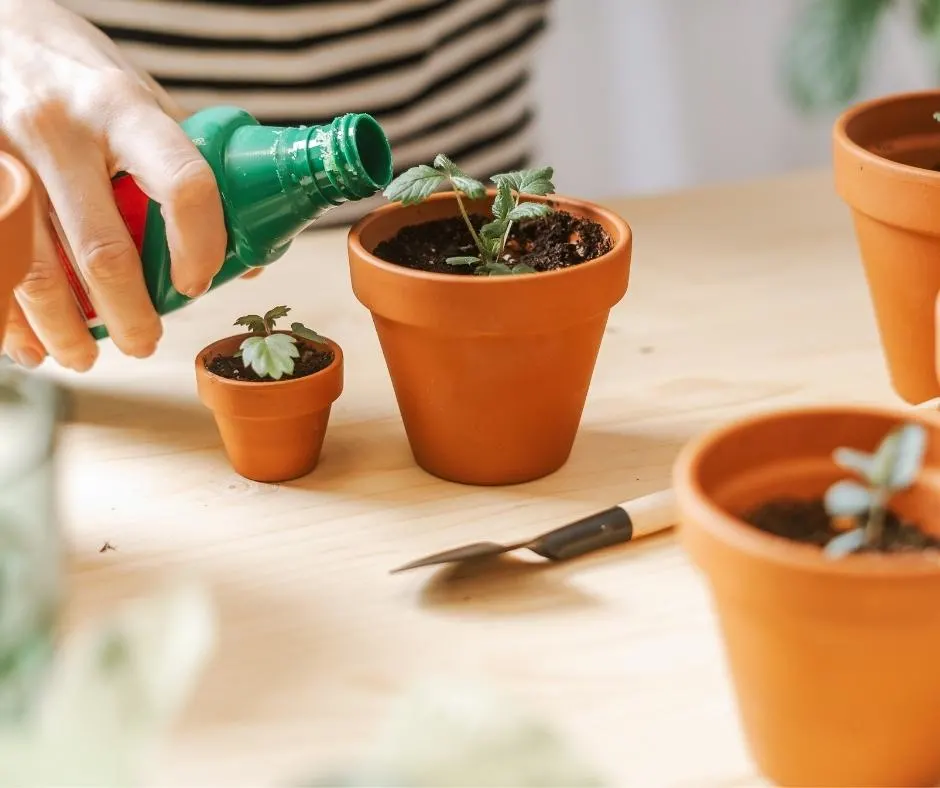
How do you fertilize indoor plants?
How you fertilize your indoor plants depends on what kind of fertilizer you plan on using. Some fertilizers come in liquid form and are often diluted with water. These fertilizers can be given to the plants when you are doing a regular watering. Simply pour the recommended amount onto the soil of your plant.
Other fertilizers can come in granular form and just need to be sprinkled on top of the soil. There are also fertilizer spikes that you can push into the soil.
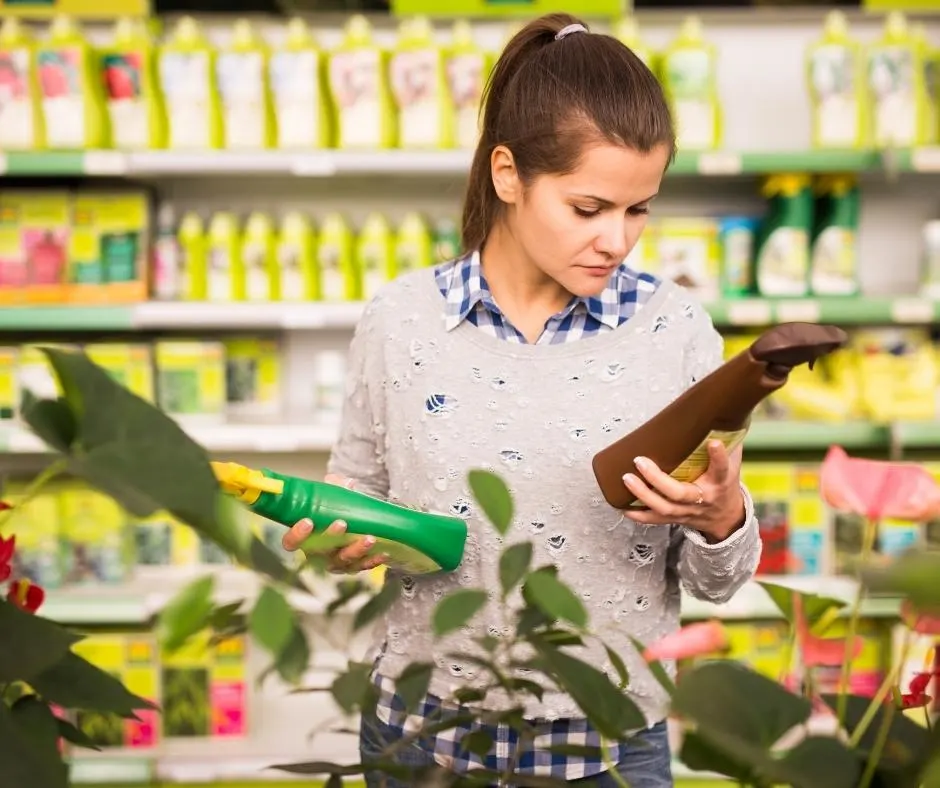
What is the best fertilizer to use for houseplants?
Most fertilizers will contain the same macronutrients that will feed your plants. Those macronutrients are Nitrogen, Phosphorous, and Potassium. These nutrients can be used in varying concentrations in any houseplant fertilizer. When you read a fertilizer label, pay attention to the numbers of these macronutrients. An even blend of all three is often labeled as a 10-10-10 blend.
An even blend of all three macronutrients is a great option for most houseplants. You can find higher concentration (20-20-20) or lower (1-1-1). Make sure you do your research on your plant care so you know which concentration is best for your specific plants. I actually use the 1-1-1 on a regular basis. It’s the Miracle-Gro liquid plant food.
You may choose a slow release fertilizer option. This is a fairly safe way to fertilize your plants since it slowly leaches nutrients into the soil over time. If you need to feed your plant quickly, you may want a quick release formula like a liquid. Just be sure to CAREFULLY read all of the directions.
Each fertilizer has different feeding instructions. You will want to pay close attention to these directions. Failure to do so may result in over fertilization of your plants.
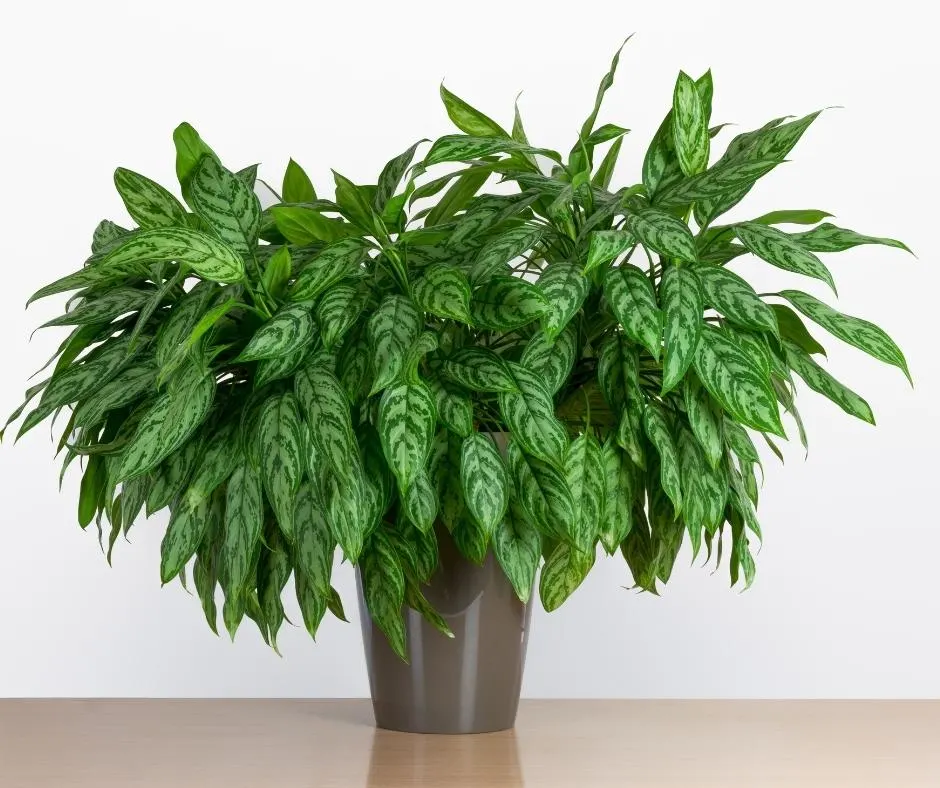
Can you over fertilize plants?
You absolutely can over fertilize your plants. Too much of a good thing isn’t always beneficial. Fertilizer definitely falls into that category. Too much fertilizer can quickly turn a healthy plant into a very sick and dying plant.
If you over fertilize your houseplant, you risk a buildup of salt and mineral concentrations. This can result in “burning” of the roots. A process called reverse-osmosis can happen. This means that your plant is losing moisture from the roots and the moisture is seeping into the soil. This can make it impossible for your plant to retain enough moisture and water to survive.
Some signs of over fertilization to look for include browning and wilting leaves, yellowing leaves, leaves dropping at a rapid rate, blackened and and limp roots, and little to no new growth. Occasionally you can also see a white crusty buildup of salt sitting on top of the soil.
You can do some emergency care to help combat this problem. The first thing you will need to do is remove any fertilizer that you see on the top of the soil. Carefully scoop out all of the white buildup or granular bits. Next, flush the plant with room temperature distilled water. Make sure that there is nothing blocking the drainage hole and that water is able to freely run out of the bottom.
This process is called leaching the soil and is necessary in order to save your plants. You will need to leach the soil 4-5 times to ensure that you have removed a large amount of the fertilizer. If you have foliage that has completely died off, you can cut those parts off using sterile sharp scissors.
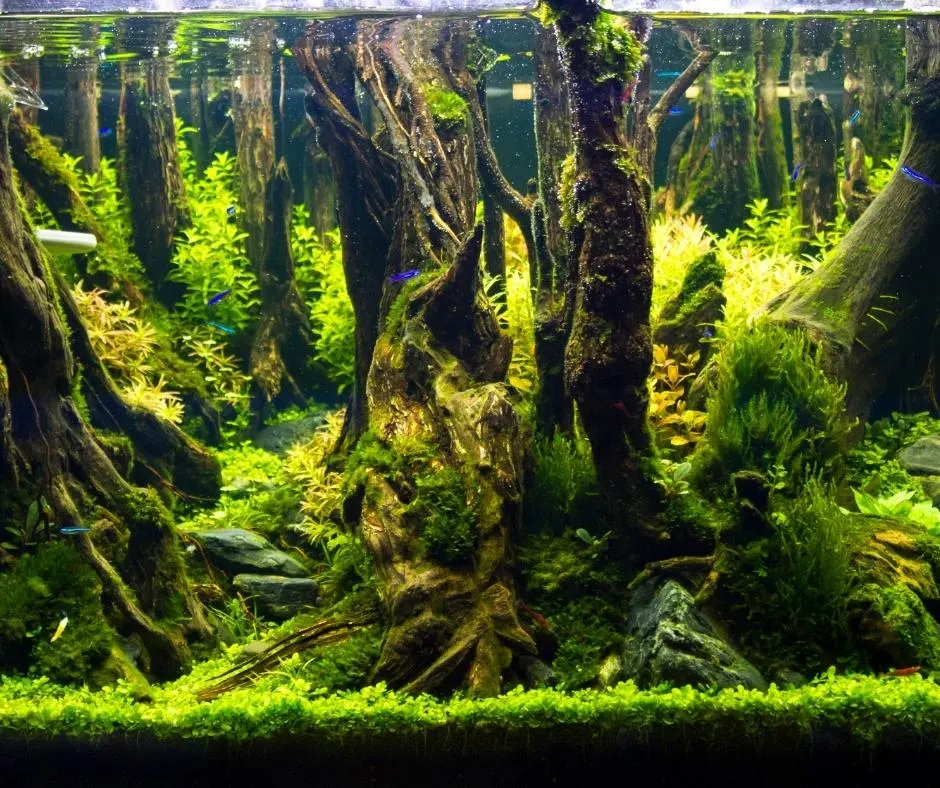
Natural fertilizer ideas
If you don’t like the idea of using a processed commercial fertilizer on your plants, there are some great natural alternatives. I personally love to use my dirty fish tank water to give my plants a nice low dose of fertilizer. I simply use the dirty water that I take out of the tank when cleaning it. And bonus! The water gets used multiple times making this a very eco friendly practice.
Used coffee grounds make a great option for foliage heavy plants. Coffee grounds are really high in nitrogen and boost leaf health. Simply mix them into the soil when potting houseplants.
Egg shells can be dried, crushed, and pulverized to make a powder like substance. Mix the egg shells into the potting soil to give your plants a boost of calcium.
Banana peels are another great option. Since they are really high in potassium they make a great fertilizer. My favorite method is to blend used banana peels with water. You can pour it directly onto the soil or strain it first and pour the potassium rich water into the soil.
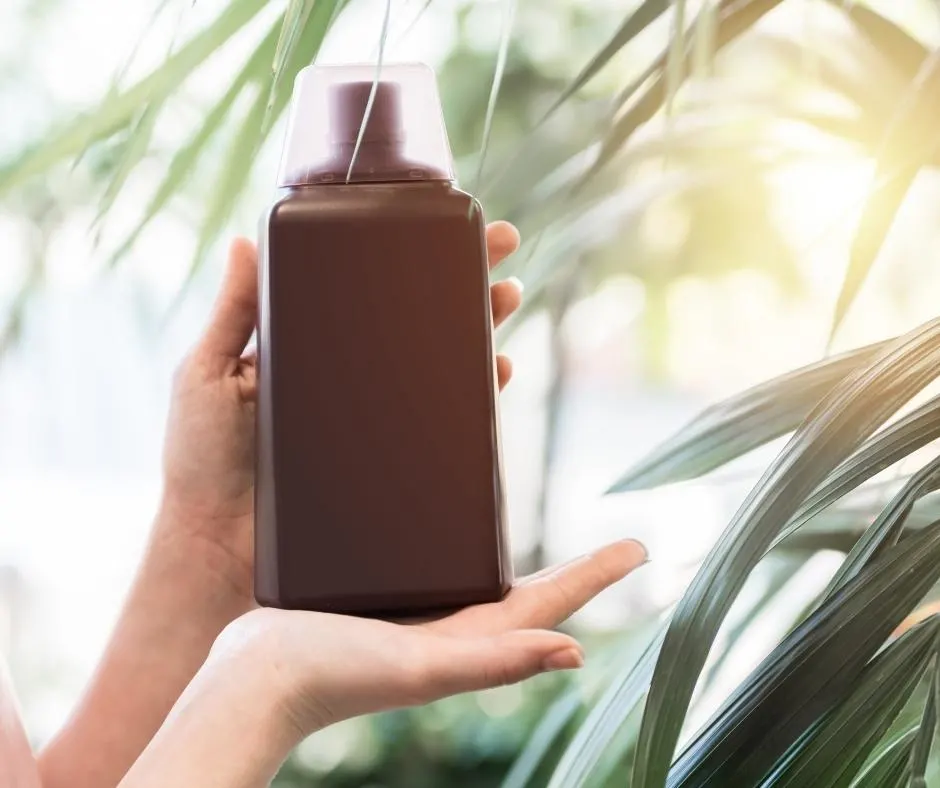
How to make your own fertilizer for houseplants
Recipe #1 :Here is a simple homemade houseplant fertilizer recipe using natural ingredients:
Ingredients:
- 1 tablespoon Epsom salt
- 1 tablespoon baking powder
- 1 tablespoon powdered eggshells (you can make these by crushing clean, dry eggshells in a blender or coffee grinder)
Instructions:
- Combine all the ingredients in a bowl and mix well.
- Sprinkle the mixture onto the soil of your houseplants.
- Water your plants as you normally would.
The Epsom salt provides magnesium and sulfur, which can help green up your plants and promote growth. The baking powder is a source of potassium, which is essential for plant growth and development. The eggshells contain calcium, which can strengthen your plants’ cell walls and prevent blossom-end rot.
Note: Use this fertilizer sparingly – once every few months is usually enough. Over-fertilizing can harm your plants. Also, be sure to use this fertilizer on plants that prefer slightly acidic soil, as the eggshells can raise the pH level of the soil.
RECIPE # 2: NOTE: This recipe contains ammonia.The pure ammonia provides nitrogen, which is essential for plant growth and encourages lush green foliage. However, Some houseplants may be sensitive to ammonia, so it’s best to test the fertilizer on a small area of the plant first before applying it to the entire plant
Ingredients:
- 1 tsp baking soda
- 1 tsp Epsom salts (plain and unscented)
- 1/2 tsp pure ammonia
- 1 gallon distilled water
Instructions:
- Mix the baking soda and Epsom salts together in a large container.
- Add the pure ammonia to the container and mix well.
- Slowly pour the distilled water into the container, stirring continuously to dissolve the ingredients.
- Transfer the fertilizer solution to a watering can or spray bottle.
- Use the fertilizer to water your houseplants as needed.
The baking soda in this recipe helps to balance the pH of the soil, while the Epsom salts provide magnesium to promote healthy foliage. The distilled water is recommended to prevent any harmful chemicals or minerals from tap water that may harm your plants.
Mix all of the ingredients together in a large jug. Let the mixture sit for at least an hour. Make sure you label your fertilizer and keep it up high out of reach of children and pets.
You can just pour a small amount onto the top of your plants soil once a month. This method works great for people that want to know exactly what they are fertilizing your plants with.
Note: It’s important to use this fertilizer sparingly and not over-fertilize your plants. Apply the fertilizer once a month or less depending on the needs of your plants.
Here are a few plant fertilizers that we recommend:
Thank you so much for reading our post on fertilizing your houseplants. We really hope it was beneficial for you! If you have any further questions, leave a comment below and we will do our best to answer it for you. Happy planting! We hope your plants grow big and beautiful.
Follow Us:
Find us on YouTube, Instagram , Pinterest and TikTok! We love to Plant chat. We also comment, like and occasionally share your content to our daily stories. We’d love to see your plants. Share your joy in your houseplants. Happy Planting!
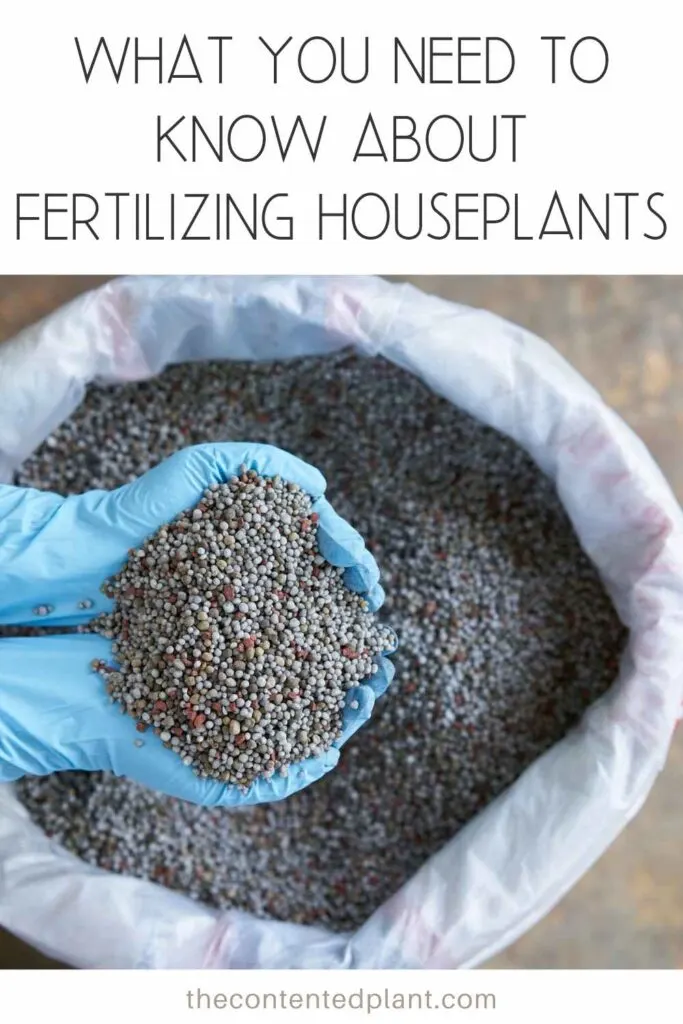


A Simple Guide to Houseplant Care for Beginners - The Contented Plant
Saturday 6th of January 2024
[…] A Guide to Fertilizing Houseplants […]
Snake Plant Propagation - The Contented Plant
Saturday 12th of February 2022
[…] Potting soil Mix for Snake Plants Snake Plant watering guide 7 common plant pests hydrogen peroxide for plants beginner plants You will Love A Guide To fertilizing houseplants […]
Best Succulent Soil Mix - The Contented Plant
Wednesday 2nd of February 2022
[…] The nutrients are intentionally low in these soils.. Succulents are highly susceptible to root rot and over fertilizing. […]
Tips on how to build a pollinator garden - The Contented Plant
Monday 31st of January 2022
[…] Fertilizing Houseplants […]
Bottom Watering Plants in Pots: - The Contented Plant
Sunday 23rd of January 2022
[…] Occasionally you need to water your plants from the top to leech out excess salts that eventually accumulate in the soil. If you see brown spots on your plant leaves leech the soil by soaking it from the top and allowing the water to drain completely through. This will also help run excess fertilizer accumulations out of the pot. […]